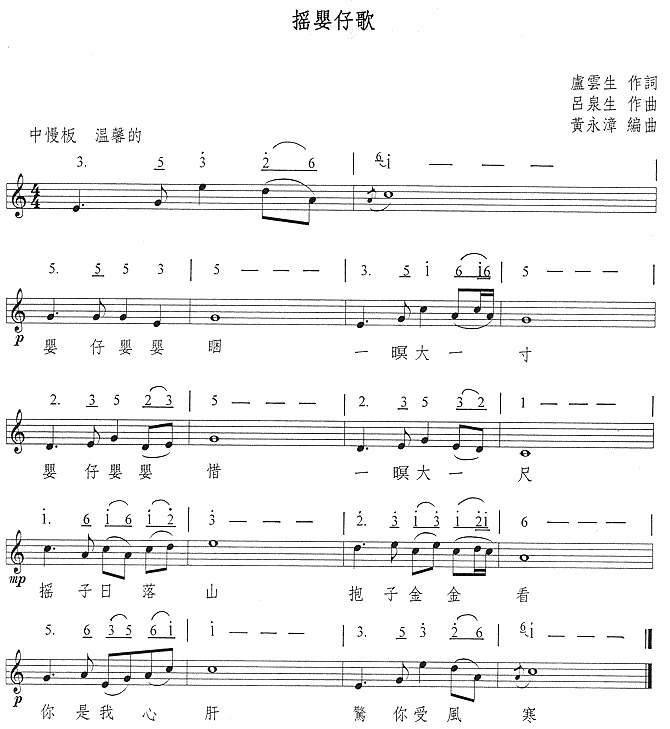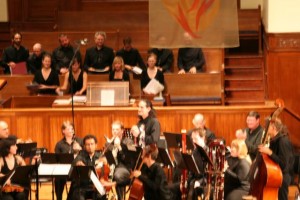After about two years of research, sketches and learning a new instrument, my composition for my daughter was premièred June 13th, 2009 by the SFCCO. The genesis of A Baby Sleeps (![]() ) came after my daughter was born and my grandfather told me I need to write her a piece. I wanted to write a modern lullaby and one that would reflect my daughters American and Taiwanese heritage. For a few months I struggled for inspiration, then one night I realized my wife was singing a beautiful lullaby to her every night. I decided to write a “Theme & Variations” on this Taiwanese lullaby, 搖嬰仔歌 (Rocking the baby lullaby). It was written by the famous Taiwanese composer, 呂泉生 (Lu Chuan-sheng). (more information on this melody and Master Lu is available in an earlier post). Originally I was just going to add the beautiful Chinese instrument called 古箏 (gŭzhēng) to the orchestra. But in August of 2008 I was in Taipei and I bought an instrument that I have wanted to play for 20 years, the 笙 (shēng) (more on the sheng in an earlier post). So I started to add those instruments into the composition and ended up featuring the sheng and guzheng as soloist.
) came after my daughter was born and my grandfather told me I need to write her a piece. I wanted to write a modern lullaby and one that would reflect my daughters American and Taiwanese heritage. For a few months I struggled for inspiration, then one night I realized my wife was singing a beautiful lullaby to her every night. I decided to write a “Theme & Variations” on this Taiwanese lullaby, 搖嬰仔歌 (Rocking the baby lullaby). It was written by the famous Taiwanese composer, 呂泉生 (Lu Chuan-sheng). (more information on this melody and Master Lu is available in an earlier post). Originally I was just going to add the beautiful Chinese instrument called 古箏 (gŭzhēng) to the orchestra. But in August of 2008 I was in Taipei and I bought an instrument that I have wanted to play for 20 years, the 笙 (shēng) (more on the sheng in an earlier post). So I started to add those instruments into the composition and ended up featuring the sheng and guzheng as soloist.
I had written a bunch of different variations and in March 2009 after the premièred of my composition String Theory, I started to put all the pieces together into a composition. I ended up throwing out several variations as they were to complex and made the piece lose it’s lullaby quality. When the dust settled I had four variations (plus the theme) that I liked: Variation I: Fragments, Variation II: Canon, Variation III: Block Chords & Variation IV: Reduction. I wanted the piece to flow better then just switching from variation to variation so I wrote some “connective tissue” to put it all together in a seamless way. The piece became more of a dream sequence then a traditional Theme & Variations. Now I prefer to view the composition in that way, where the first theme is when the baby is going to sleep listening to the lullaby and at Variation I she is asleep and starts to dream. The variation send her on dream adventures, maybe swimming in the ocean or floating in the sky. At the reprise of the theme at the end of the composition, the baby is back from her dream adventures and is dreaming about being in her parents arms.
A reviews of this concert can be found on Sequenza 21 and Memory Select’s Blog






